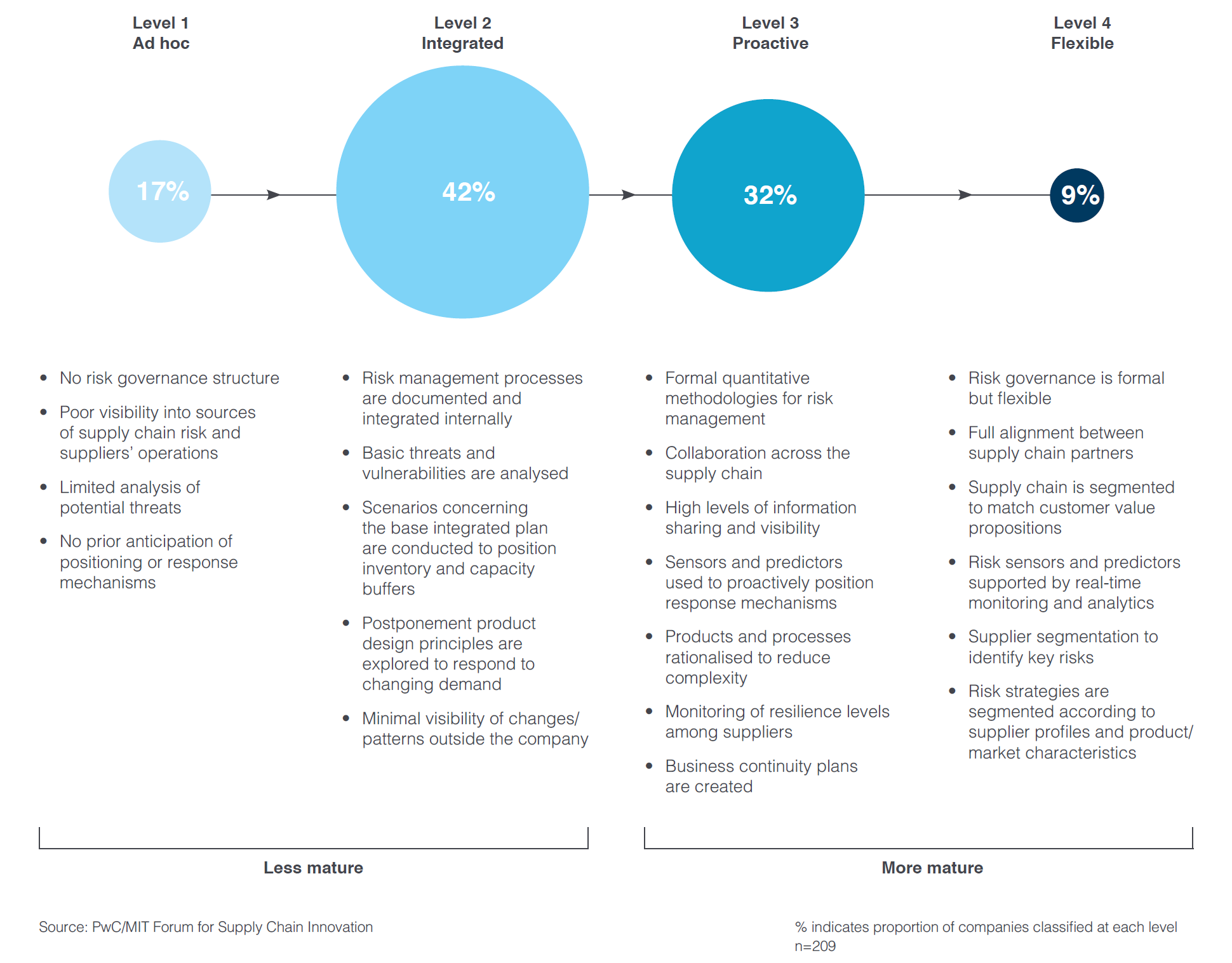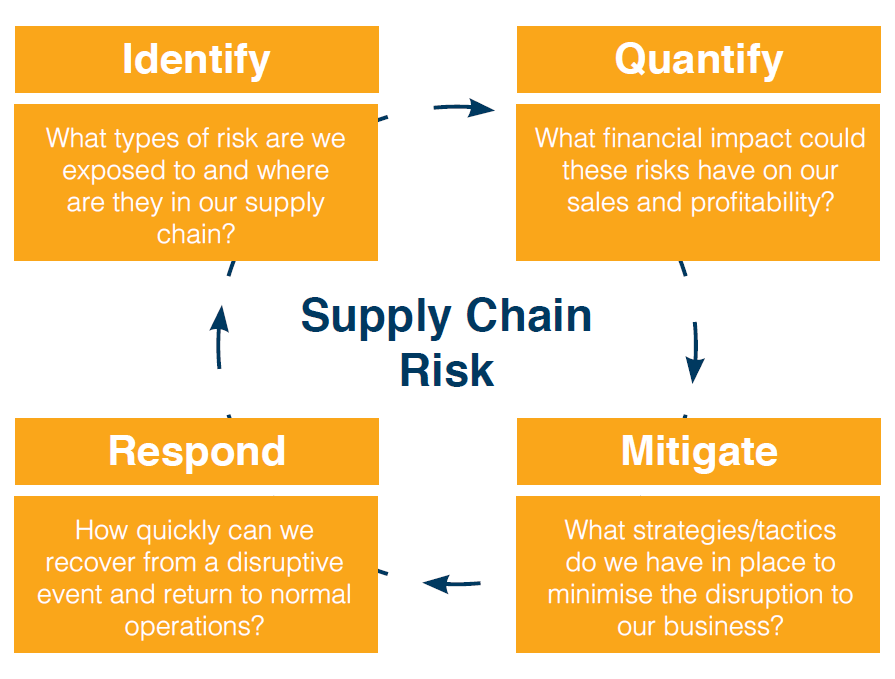Imagine yourself in this scenario; You wake up at the usual time, and over coffee, you review the news. As you flip through the articles on your iPad, you see it. A major earthquake in Taiwan. Then you get the e-mail. One of your key suppliers uses a supplier that is in the area affected by the quake and is effectively shut down for the foreseeable future… Uh oh. It’s going to be a crazy, busy day. When you get to work, you get your team working on this issue. You don’t panic because you are ready for this. You have a supply chain risk management strategy in place. This key supplier had been identified and sure enough, you have a second source primed and ready to go. As you put things in place to switch over to the other supplier you mentally pat yourself on the back. It looks like you should be able to ride this crisis out without missing a beat. A few hours later, your procurement head walks in the office. “We have a problem.” The alternate source uses the same supplier in Taiwan. We won’t be getting any of this key component for the next several weeks…maybe months. Your heart sinks as you pick up the phone to call your boss… Think this is a pretty unlikely scenario? Think again. This scenario played out for thousands of companies after the Japan earthquake, the Thailand floods and numerous other smaller scale disasters. Many companies have accepted the need for Supply Chain Risk Management because they understand that just such a scenario could occur and if they are ready for it but their competitors are not, they have an opportunity to gain market share. The problem is most companies are relatively immature when it comes to Supply Chain Risk Management.
'SCM World, Innovative Approaches to Supply Chain Risk, Geraint John, July 2014'.
SCM World has published a report ‘Innovative approaches to Supply Chain Risk’ authored by Geraint John, Senior Vice President, Research that outlines an approach to bring your supply chain risk management to the next level of maturity. Supply chain risk management is not simple otherwise, given the potential impact to corporate revenues, I’m sure that more companies would have robust supply chain risk management processes in place. The report outlines some of the key challenges as follows;
- A variety of physical and non-physical risks need to be considered including geographic factors (natural disasters, political unrest), supplier quality and labor issues, volatility in pricing, customer demand, shipping, IT security, regulatory changes, etc.
- Supply chains are complex; You must understand risks not only to your suppliers but their suppliers as well (tier 2, tier 3, tier n). Adding to this challenge is the reluctance of suppliers to share their sources with their customers for competitive reasons.
- There has been a huge increase in the amount of data available, both numeric and unstructured. How do you cut through the noise and find data that is relevant? No off the shelf tools exist. Analytics and mapping is available but many companies are not at the level of maturity to leverage these. The temptation is to act on gut instinct in the face of too much data but this can lead you down the wrong path
- There is a natural conflict between risk mitigation and supply chain efficiency. Efficiency programs like lean drove us to reduce suppliers and cut inventory. Supply chain risk management practice advises us to source additional suppliers and plan additional strategic inventories as mitigation strategies. It can be a real challenge to get executive approval for these measures in today’s environment.
The report outlines 4 key action areas that companies developing a more systematic, focused and proactive supply chain risk management approach need to address;
- Identifying and assessing risk – This includes visibility across the supply chain including a good understanding of the companies involved. Leaders like Cisco and IBM utilize dialog with suppliers and customers as well as visual risk mapping and scenario planning techniques
- Quantifying and prioritizing risk – Given that all companies operate on limited resources, focus on those areas that will deliver the biggest benefits. One way is to plot likelihood of occurrence against business impact. While this approach can work well for recurring operational risks like supplier performance, it doesn’t work as well for hard to predict incidents like natural disasters. One approach suggested in the article is that supply chain managers assign financial impact and time to recover factors at a site and component level. This tends to identify critical but low-spend suppliers that may otherwise be overlooked.
- Mitigating Risk – inventory tracking and dual sourcing are considered to be the most effective risk mitigation strategies. Also increasing use of standard components, segmented and regionalized supply chain strategies and business continuity plans
- Speeding Recovery – Business continuity plans that have been developed and tested with suppliers are key to rapid recovery
'SCM World, Innovative Approaches to Supply Chain Risk, Geraint John, July 2014'.
For me, the key takeaways from this report are that effective supply chain risk management needs to be all inclusive – it must include layers beyond just your suppliers. You need to evaluate your supply chain based on the impact each supplier, site, and component might have on your business. (I wrote about a similar approach here.) Your supply chain risk management process must be integrated into the broader enterprise processes. It shouldn’t be considered an isolated process but instead should be a consideration in each decision made by the company. Those were my takeaways, but I encourage you to download the report and form your own conclusions. You may look at your supply chain in a completely different way. What supply chain risk mitigation processes are you using? Comment back and let us know!






Discussions
Leave a Reply